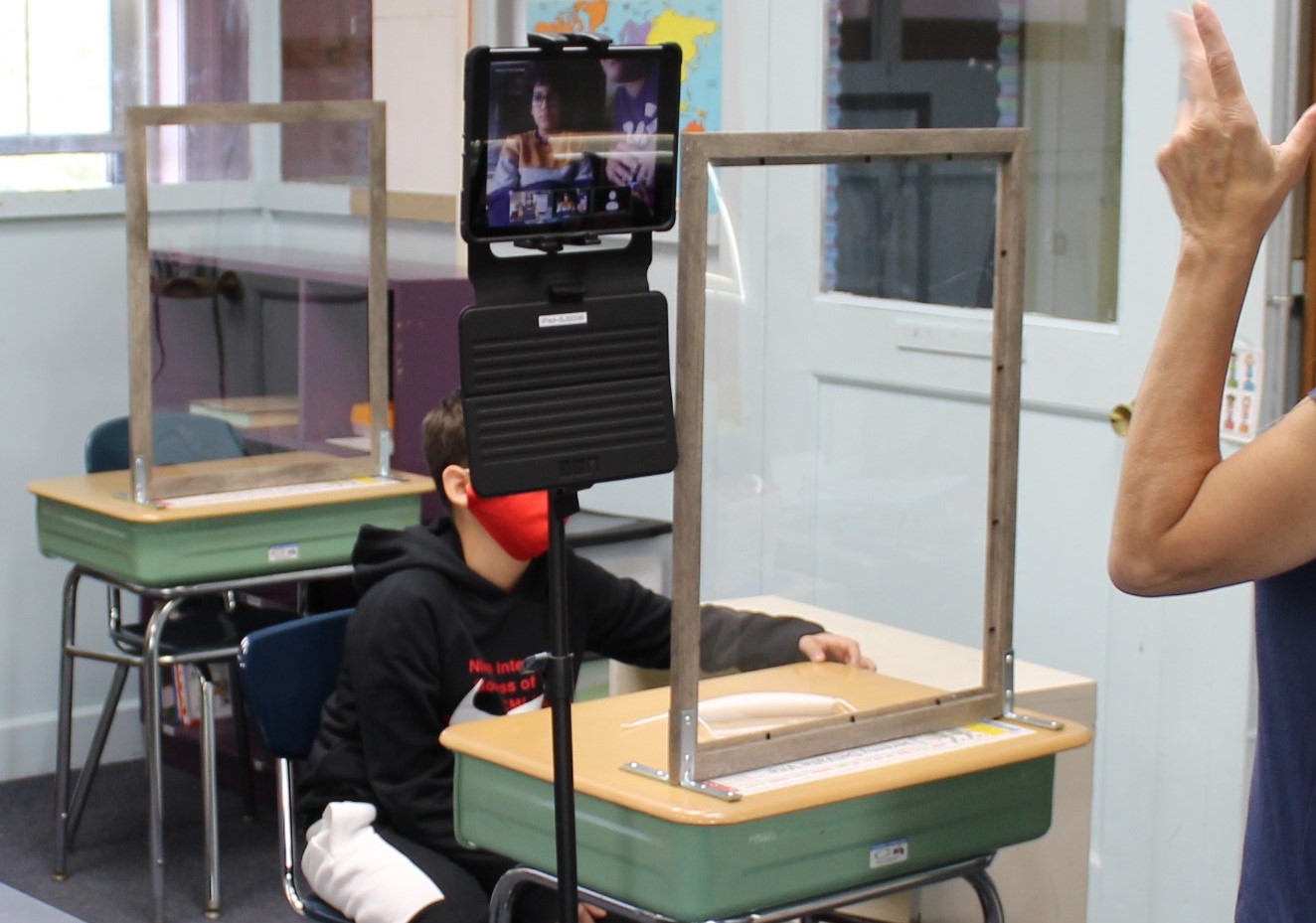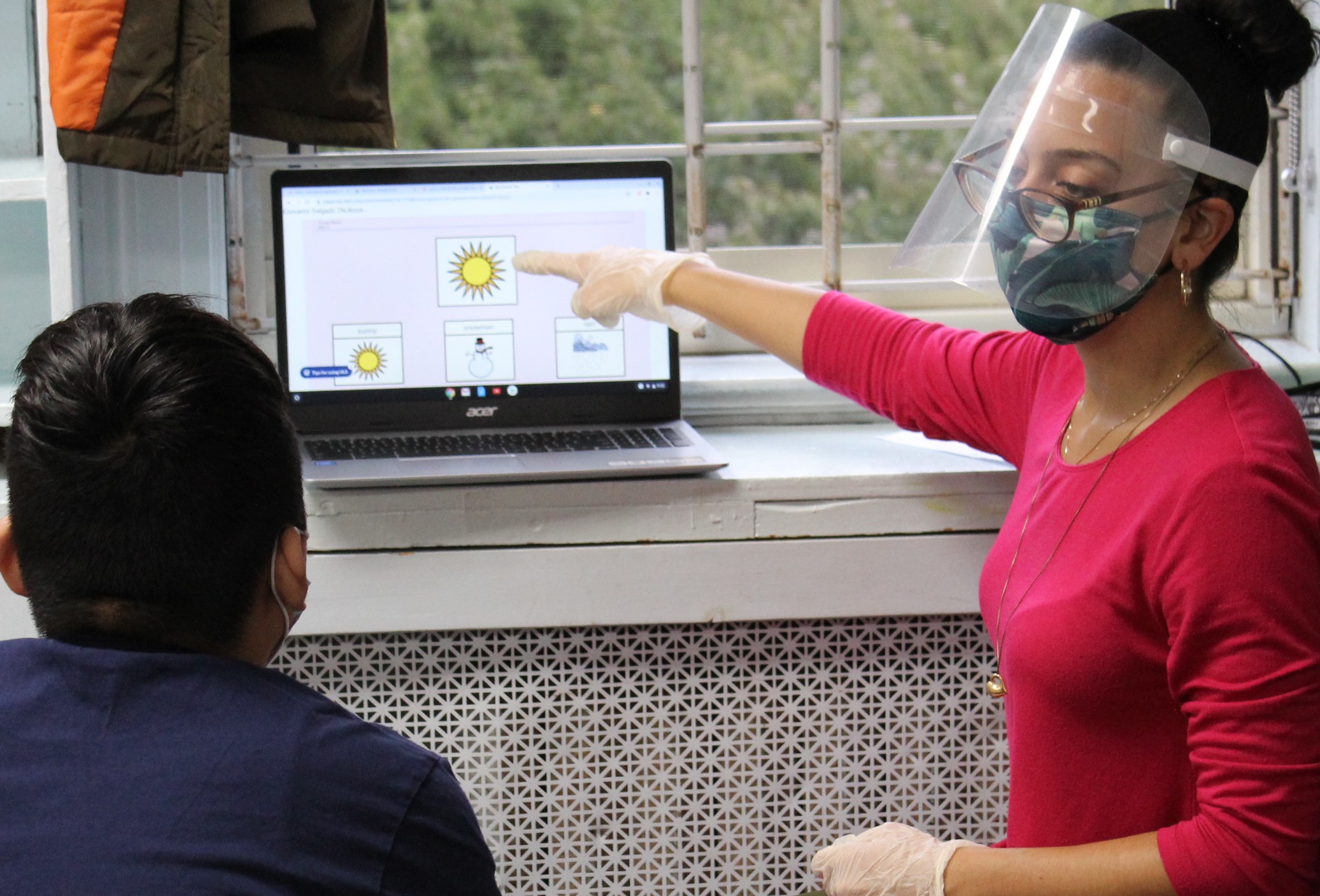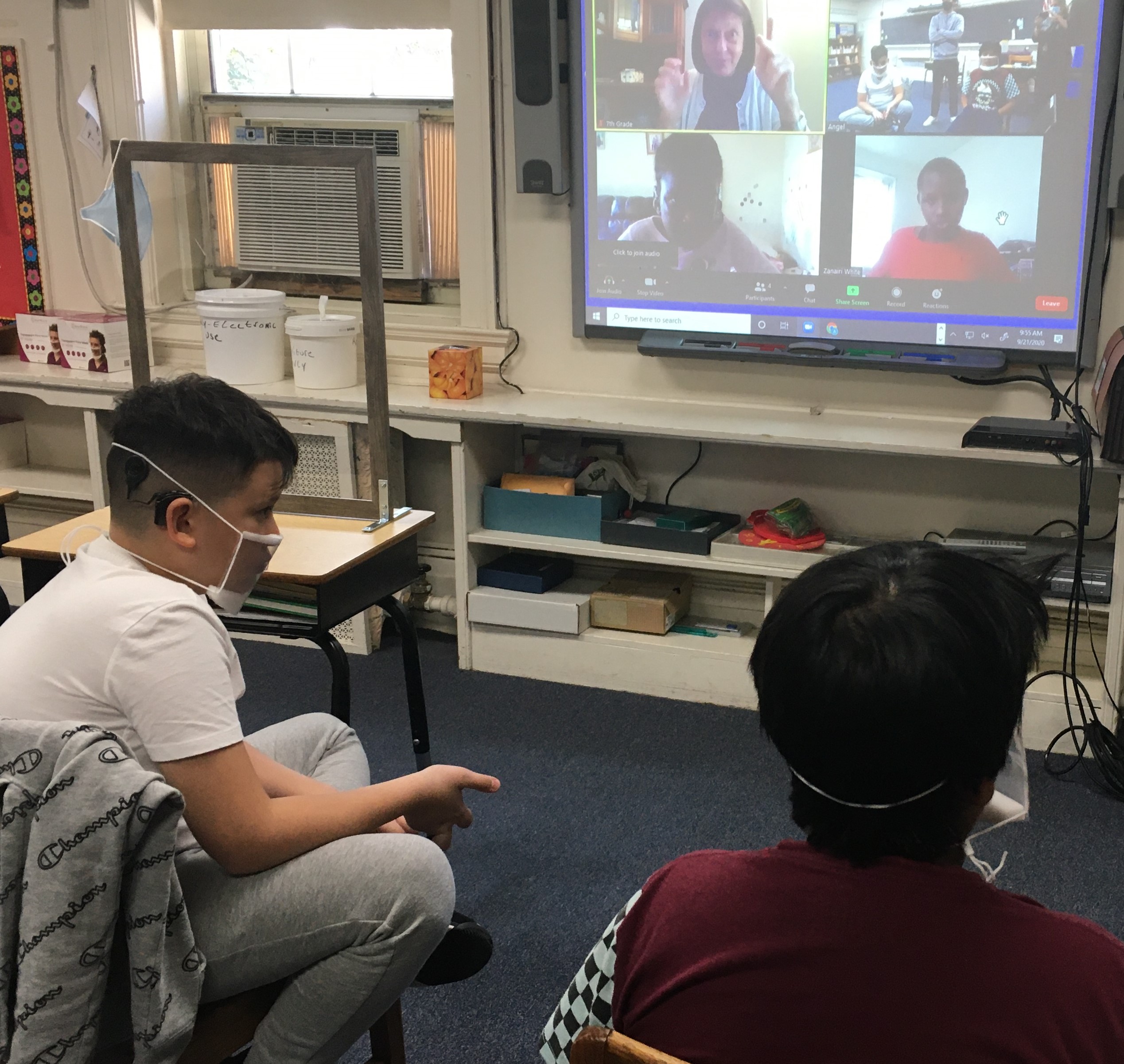At the turn of last year’s New Year’s Eve celebrations, the term 2020 or (“20/20”) vision became a common catch phrase among the masses. Little did we know what awaited us in the new year and how the challenges the pandemic would bring would alter all that we know as educators. We were aware there would be certain disparities, but not of the incredible magnitude of change that we would face during this time.
At our school, St. Joseph’s School for the Deaf in the Bronx, New York, we have been educating students with hearing loss for over 150 years. There is a rich history of Deaf culture that spans decades. Students are taught Deaf culture and language acquisition, and the understanding of the learning processes is a key component for the presentation of material for them. We have a full staff to support them in all of these aspects, and to support their families as well. Students are nurtured and cared for and bonds of connection are made that last well into adulthood. Some of our former students have even returned as employees. The connections are for a lifetime in many cases.
Like most inner-city schools, there is no one-dimensional concept of the daily school day. There is so much more. Students are provided with all the basic needs within our building — emotional, physical, educational, and even mental health support, as well as the access to sign in their native language and culture. St. Joseph’s is a thriving community where students can fully be themselves and grow to their fullest potential. Access is key to their curriculum, community, and lives.
We understand the Deaf students that we serve and their language barriers — not only within society itself, but within their own family structures. Many of our students are from multicultural households where English is not the first language, and where other members of their homes may not be able to communicate with them. Being in a school that is a language rich environment not only provides an education, but also socialization and relational enrichment for them.
When the whispers of the dangers of COVID started creeping into conversations, the question became: How would we support and provide an education for our students? We had to think fast on our feet to get materials, technology, school work, and even basic sustenance to their homes. The pandemic would incite school closures and the students would be cut off from their community. Under the charge of Executive Director, Debra Arles, and the administrative staff, the troops were rallied. There was a scurry of activity to create workbooks and packets of books, art supplies, and anything we could fathom to send to homes. Teachers, assistants and support staff created packets for home deliveries or families came in to pick up materials. Then, as we braced for online learning, there was a short period of silence. We lost contact with our students. Teachers and staff were terribly concerned for their safety and well-being because the students become “our own” while in our classrooms.
The various challenges that were posed made the process that much harder. Devices were not readily available, there was a lack of technological infrastructure in the homes, and the list goes on. Conducting a history lesson in sign language needs more than a two-inch screen. Anxiety was high as we raced to get these issues resolved in order to teach and communicate effectively. After parents lost their jobs due to COVID, the economic abyss became clearly evident in the lapse that occurred for access, along with the language barriers and lack of basic provisions. In many homes, the students remain isolated with a lack of communication ability between family members and themselves. There are often numerous interpretation services needed: sign language, ESL, etc. There is no “one-size-fits-all” solution by any means, and we often have a lot of figuring out to do logistically.
But because of the resilience of our staff, community, parents, and students we’ve worked through it. We approach 2021 with this new vision from what we have witnessed in the year prior.
The pandemic birthed a different type of connection for us all, and we move forward with this knowledge. 2020 allowed us to view life so very differently, and gave us a look at things we never would have taken notice of prior to the pandemic. Teachers are “entering” students homes daily, partaking in family dynamics, and the parents and caregivers are participants in lessons. In many cases its double-sided education. Technology is the bridge between two worlds, and both parties — teacher and students/parents — have made stunning realizations of the challenges the other faces. The parents who sit in on classes can witness sign language lessons — the language of their children. Communication is regularly available with the teachers, and vice-versa. Parent support groups, mental health sessions, meetings and trainings are now virtual as in most schools, but in addition, St. Joseph’s has Sign, captioning, and Spanish, and other languages are represented as well.
2020 has been a definite eye-opener for us and our community. 2021 allows us to now clearly see the “Signs” and prove the differences we have learned.
Subscribe here for all the latest news on how you can keep Thriving.
More Thrive Global on Campus:
What Campus Mental Health Centers Are Doing to Keep Up With Student Need
If You’re a Student Who’s Struggling With Mental Health, These 7 Tips Will Help
The Hidden Stress of RAs in the Student Mental Health Crisis






